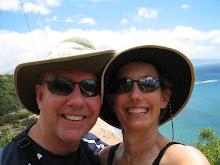Our nerves were a bit on edge heading into the bully of the Balkans. After witnessing the damage of war in Bosnia & Herzegovina, inflicted mainly by Serbs, we were a little raw. It was hard to know what to expect in a country that was the former Yugoslavia’s political and power capital. Not only had Serbia fought and lost to all of it’s neighbors, but they are currently struggling and failing to hold on to it’s latest foe, Kosovo.
Belgrade is trying hard to help tourists understand and enjoy their experience. We found a delightful organization, Belgrade Hosts. Their volunteers personally meet visitors and spend time answering questions, making recommendations and sharing historical important sights and information. Our host was a smart, energetic young woman. She is studying international economics and has no interest in traveling to the US. We found it curious to learn that Russia is where she wants to spend more time. In fact, we found that Belgrade as a whole seemed to be aligned with Russia far more then the western world. She led us on a great walking tour of the old part of Belgrade, but we really wanted to hear her views on the current strife between Serbia and Kosovo. We were disappointed when she gave a politically correct answer and changed the subject. In fact, everyone we asked about the Kosovo situation wouldn’t engage. We weren’t sure if it was because we are Americans or because it was a highly personal topic.
We had no idea that Belgrade has been at war for nearly 2,000 years with only a few short periods of peace. It is beautifully located at the confluence of the Danube and Sava rivers on a natural limestone hill amongst an otherwise flat area. The position made it very obvious for the city’s location and attractive to invading enemies. It has been raided and rebuilt dozens of times.
The architecture showed all the influences of the various powers. Very modern building, ornate Viennese decoration from the former Hapsburg times, bulky communist era buildings, and war damaged structures all exist together. Quite a site. A work in progress you might say.
One of our most stressful times so far happened in Belgrade. And it didn’t have to do with their use of nor our struggle with the Cyrillic alphabet.
It’s not a typical goal for us, but in Belgrade, we decided to find the US Embassy. We were curious because we’d read that it was attacked in 2008 over the Kosovo issue and in a few days, Secretary of State Clinton was visiting. We walked through the city until we found the US Flag flying on a building. Seeing the stars and stripes made our pride inch up. We hadn’t seen it in a few months and it looked good. As we got closer though, our moods slowly dampened. We noticed that all of the windows facing the street were covered. There were gigantic cement planters in front in which the plants and flowers did nothing to take away the real purpose of these garden barricades. It was a sobering sight. It was a business day but it looked shut up as if awaiting a not so pleasant situation.
Being the tourists that we are, we started snapping pictures when all of a sudden, three extra large Serbian guards from across the street started yelling. We were pretty sure they were hollering at us, but we ignored them. Then they screamed at some people near us to stop us. After the 3rd forceful shout directed at us, we thought we’d better go find out what they wanted. We explained that we are US citizens and just wanted a few pics of our embassy. They demanded that we delete the photos and pointed to a tiny sign, behind a leafy tree, that indicated no pictures were allowed. When we rolled our eyes, they said these are “your” rules not ours, and that if we didn’t delete, we could all go “visit” the police for questioning. We were scheduled for a tour of the Nikola Tesla museum so we consented and deleted the pictures.
After walking a few blocks, trying to shake off our brush with Serbian men in uniforms, we found and photographed several destroyed buildings that NATO forces had bombed in 1999. If it wasn’t for a few weeds growing out of the ruins, you would guess that the bombings took place only yesterday. Keep in mind that these buildings are in the business and political heart of Belgrade. Prime real estate. Why have they left the shell of former large military offices unchanged for 11 years? A reminder to the working stiffs to hate NATO? We can only guess but it seemed like some sort of statement was being made.
Between the encounter with the huge Serbian guards and seeing the striking war damaged buildings made for a very intense afternoon.
On a positive note, the Nikola Tesla Museum was lots of fun. It was the perfect distraction from the earlier events of our day. Nikola Tesla is the inventor of alternating current and single handedly changed the way the world is powered. He helped George Westinghouse create and store hydro electricity created by Niagra Falls. You might remember him from a role in The Illusionist, a decent movie about a couple of magicians. We had seen the movie so it was really enjoyable to know more about the man behind the character. He is the real magician!
Visiting Belgrade, Serbia was a last minute decision. We’re glad we went, but we don’t want to go back. We wanted to experience a little of the country that we’d heard so much about from Croatians and Bosnians. We know that with any story, there are two sides, and we wanted to get the Serbians perspectives. Unfortunately no one would discuss the 1990’s war or the current situation with Kosovo. When a powerhouse goes down, it probably uses the best coping strategy around; denial. Could it be that the U.S. is using this same strategy?





















No comments:
Post a Comment